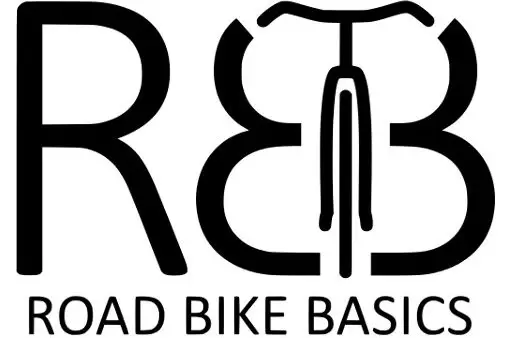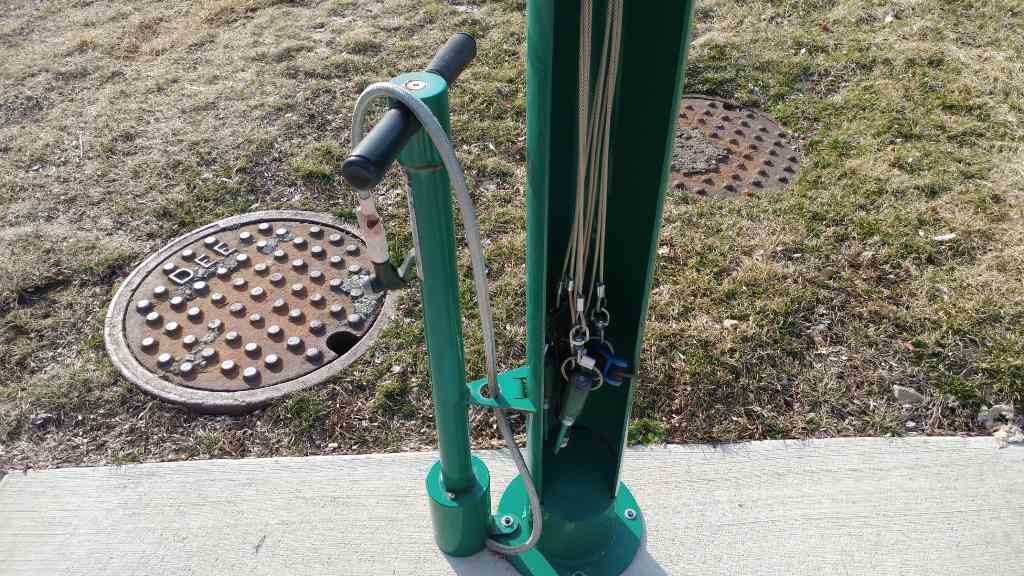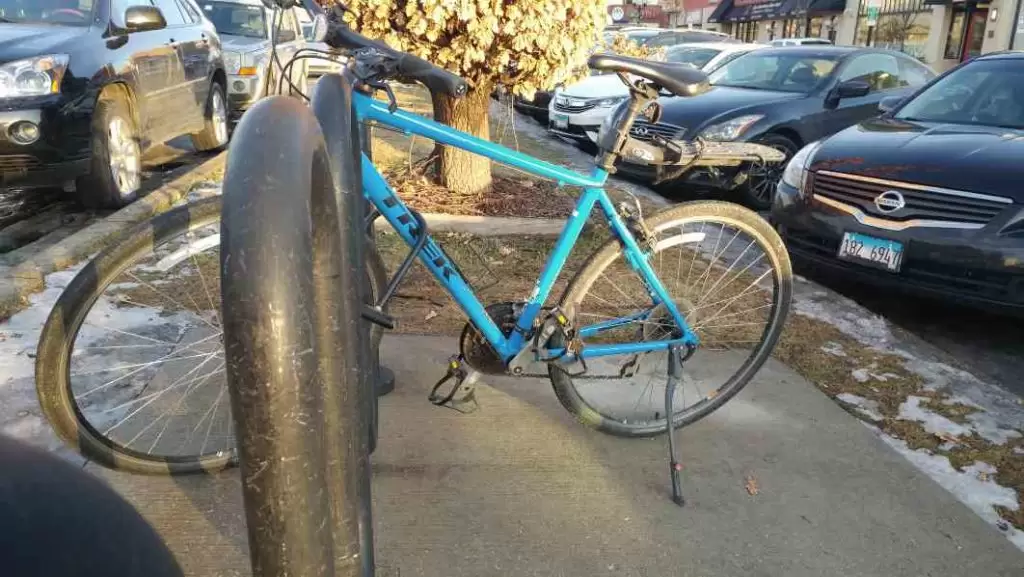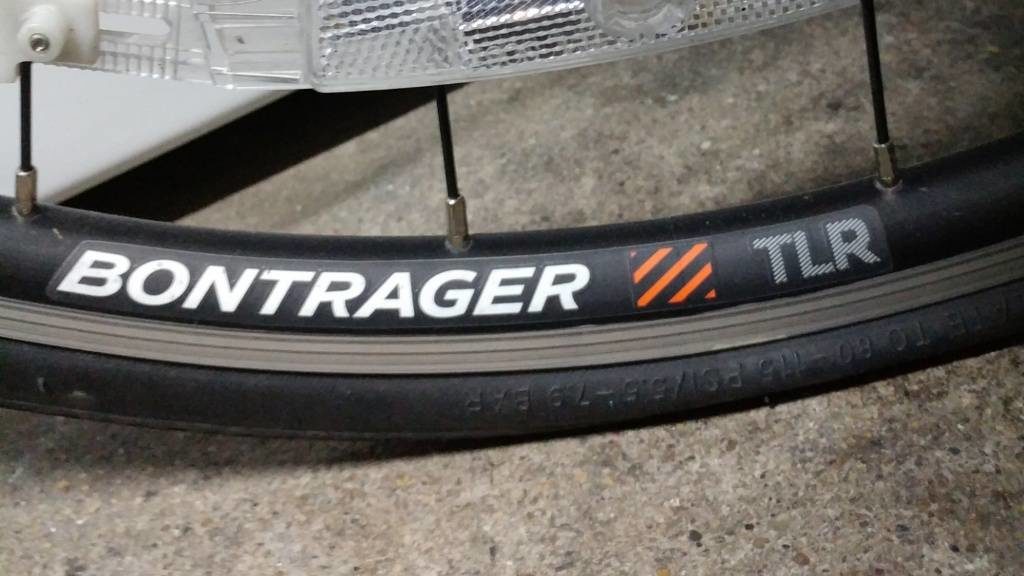Before I hop onto my bike for a ride, I tend to check the tires and then inflate them to max pressure, but I recently heard that there is a lot more to take into consideration when determining the best pressure for a ride.
You should always keep your road bike’s tires pressurized to be within the suggested range that is stamped on the side of the tires. That is usually 80 to 130 psi. Under-inflating and over-inflating can lead to serious problems. That being said, you should reduce the pressure for adverse terrain and increase the pressure if you weigh more.
Let’s jump into how serious those problems are, what pressure actually does to your tire while you are riding it, and how to pick a good pressure for your ride.
Here is a link to my post on how often to check your bike’s tire pressure.
What can go wrong
There are two main types of tires that go onto a road bike. Tubes are when you have an inner tube filled with air and a rubber tire outside of that. Tubeless is just like a regular tire, but it is designed to be inflated. Each has its advantages and disadvantages.
When you ride on flat tubes, they can deform sideways and get pinched by the metal rim of your wheel. This not only wears down the skin of the tube, but it could also go right through and pop it outright! If you over inflate a tube, you run the risk of making the inner tube fail by bulging. In worse cases, they can pop on their own!
Tubeless tires have similar problems. Flat tubeless tires wear out and lose air much more quickly than a properly inflated tubeless tire. Apparently, if you take a hit something, it will “burp!” It will temporarily come off the rim and let some air out. So, it turns into a vicious cycle. As soon as your tubeless tires get low enough, every hit will reduce the pressure until you are just riding on your rims. That will destroy your tires in no time.
What pressure actually does to your tires
The pressure in your tire changes two main factors, the shape of the contact patch area, and how the tire absorbs impacts from the road surface and debris. The contact patch is the part of the tire that is actually touching the ground. Higher pressure results in a tire that is much more firm and less of the tire
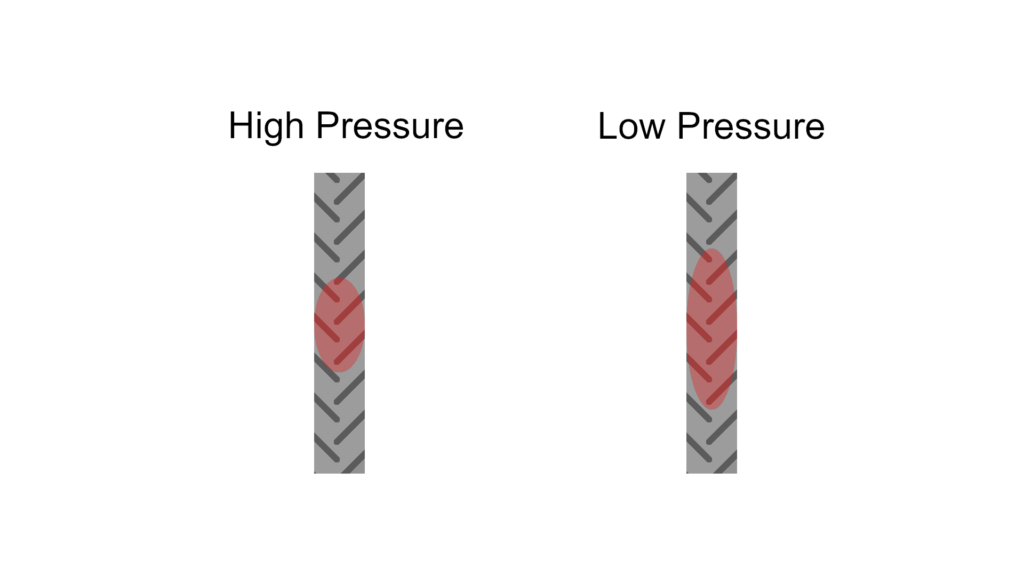
For a small contact patch, the tire has less rolling friction. That means that you’ll be able to go faster even though you are putting down the same amount of power. A larger contact patch deforms more of the tire while you are rolling. So, more of your power will be lost to rolling friction, and you’ll slow down.
A larger contact patch will increase the static friction between your tires and the road. That means that you’ll be able to take harder turns without slipping thanks to the extra grip. A smaller contact patch won’t be able to offer as much friction. So, it’ll be easier for your tires to slide.
Pressure also affects the kinds and amounts of impacts that your tire is able to handle. If your pressure is too high, your tire will bounce while you are riding instead of staying in contact with the road.
Cycling scientists have determined that 15% sag, how much the tire squishes down when it is loaded, is the ideal number. They say that amount of sag will maximize the shock absorbing capabilities of the tire, and it will minimize the rolling resistance.
Thankfully, said scientists also made a very nice graph for us. Just remember that the “Wheel load” is the amount of weight on a single wheel. The example in the text just below the graph does a decent job of describing how to use it.
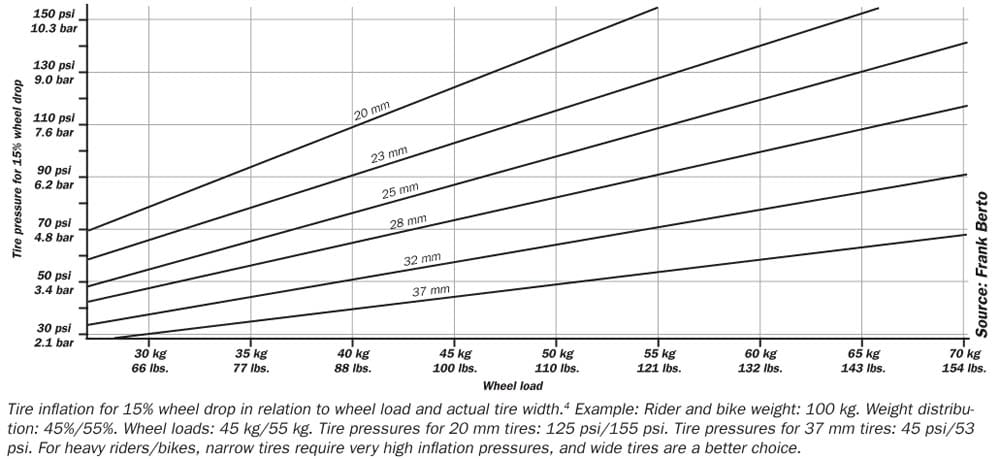
What to consider
Weight
As mentioned above, this factor probably has the largest influence on where your tire pressure should be. The more weight that your tires are supporting, whether it be you or your gear, the more your tires will be pressed in, and the larger the contact patch will be.
So, up to the manufacturer’s upper pressure-limit, you’ll need to pump your tires more to get a reasonable contact patch. If you and your gear don’t weigh very much, you will want to aim closer to the manufacturer’s lower pressure limit.
As well, you’ll have more momentum when your tires take an impact. So, the increased pressure will make sure your rims don’t cut into your tubes or tires. The rest of these factors are less important, but I’ve ordered them by how much influence they have.
Terrain
If you are going to be riding on wet roads, gravel, or anything else where you are going to have a harder time maintaining grip, you’ll need a larger contact patch. A lower pressure will give you a bit more authority when accelerating, braking, and turning.
Riding on a dry paved road is about as ideal as it gets in terms of terrain. So, you don’t need as large of a contact patch in order to get the same amount of control as you would have on more adverse terrain. Increasing your pressure will let you focus more of your power into your speed and will keep you from losing it as quickly.
Aggression
If you are going to ride very aggressively, you’ll want to maximize the control that you have over your bike. That means you’ll want a larger contact patch. So, lower your tire pressure. If you are going to be less aggressive, you can focus on speed. That means a smaller contact patch and
Temperature
As air heats up, it wants to expand, and as it cools, it wants to contract. So, pumping your tires up to the perfect pressure while they are cool, and then leaving them out in the hot sun will result in over-pressure. As well, your tire turns your power into heat when they deform. So, the pressure in your tires will increase as you start to ride.
On the other hand, if you fill your tires up on a hot afternoon and decide to go for a ride the next morning while it’s cold, expect your tires to have less pressure than when you left them. It’s not a bad idea to check your tire pressure before each ride when the temperature has changed since you pumped them up.
Picking the right pressure
I’m sure that I could come up with some fancy formula too, but I’d rather see a graph than need to do math. I got the numbers for the weight from a similar graph that is attributed to Michelin (the tire company), but I can’t find it on their website anymore.
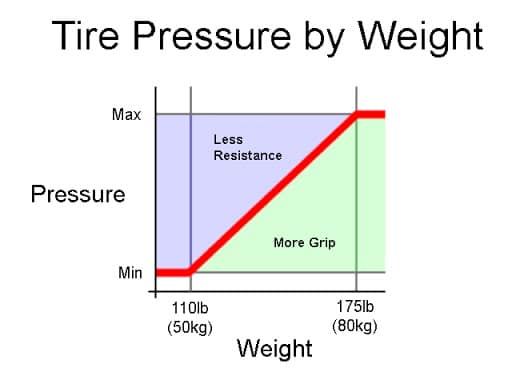
The red line shows a suggested pressure to maintain a good contact patch. Adjusting the pressure up or down will put you in either the “more grip” region or the “less resistance” region. Increasing the pressure too high won’t let the tire stick to the road well, and decreasing the pressure too low runs the risk of punctures.
You can throw all the science you want at it, but, as long as you are between the max and min pressures stamped on the side of the tire, you should be fine.
I hope that all of this has empowered you to confidently pump up your tires to exactly the pressure that you need to have a ride you’ll love.
Thanks for being here!
I make content that empowers people to enjoy riding their bikes.
Are you interested in learning more about that?
Here are some hand
